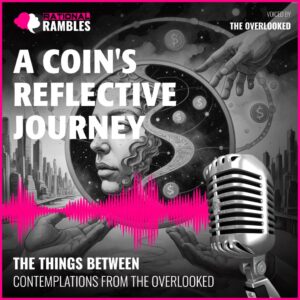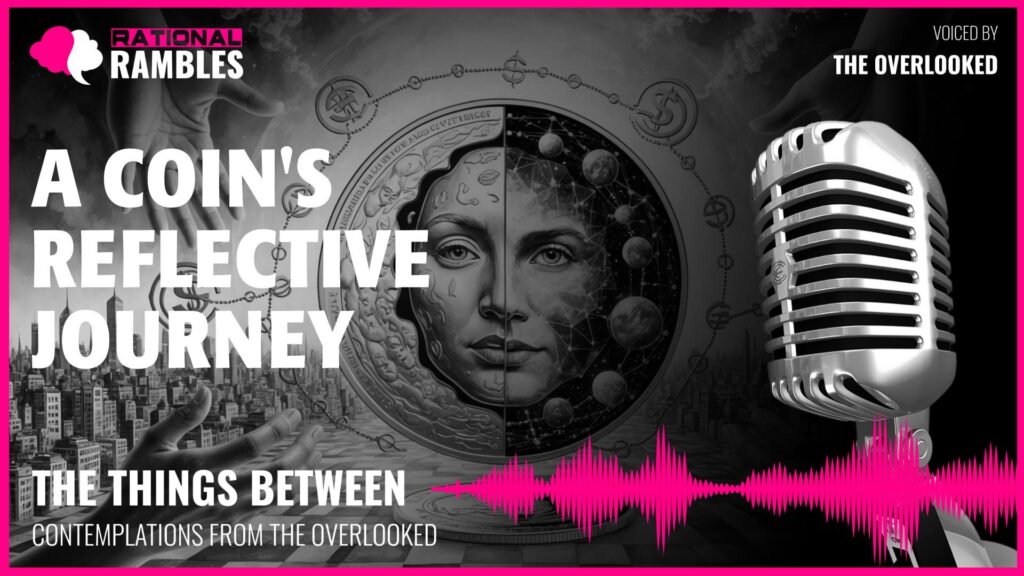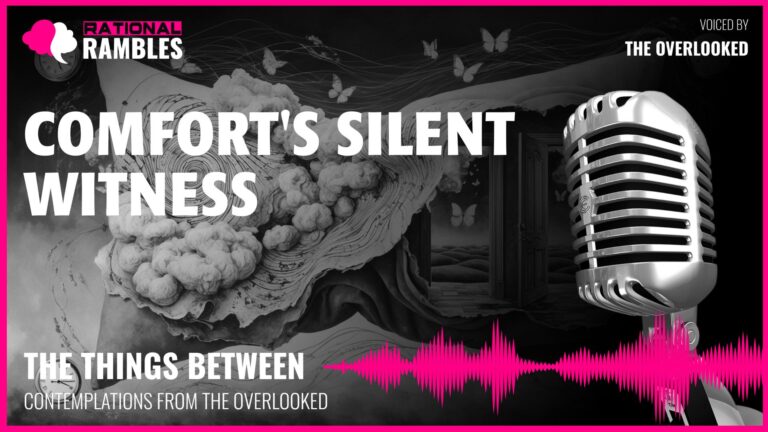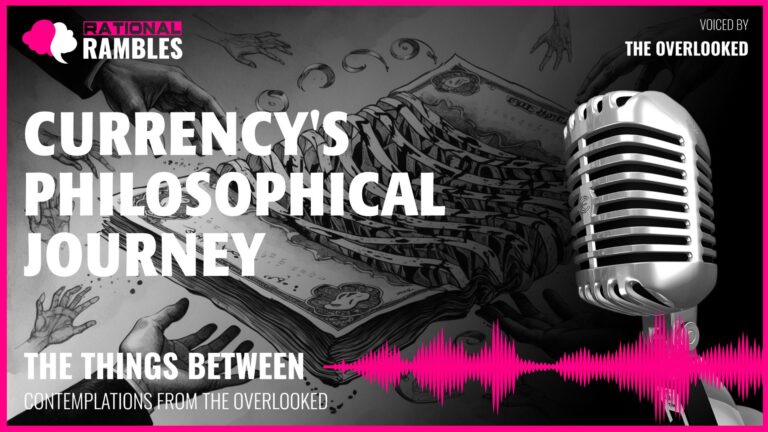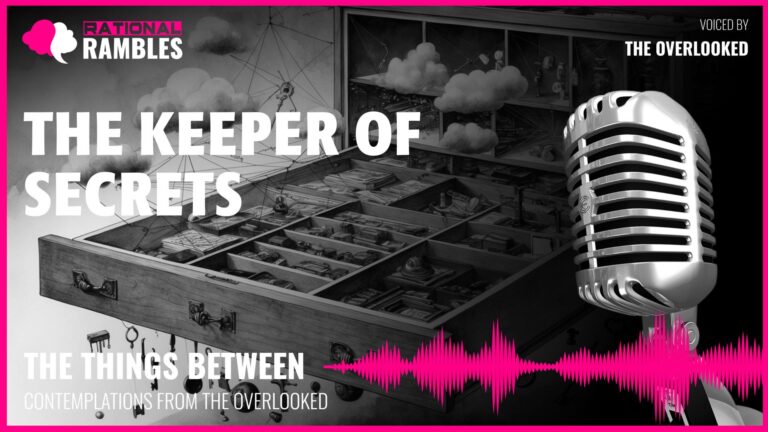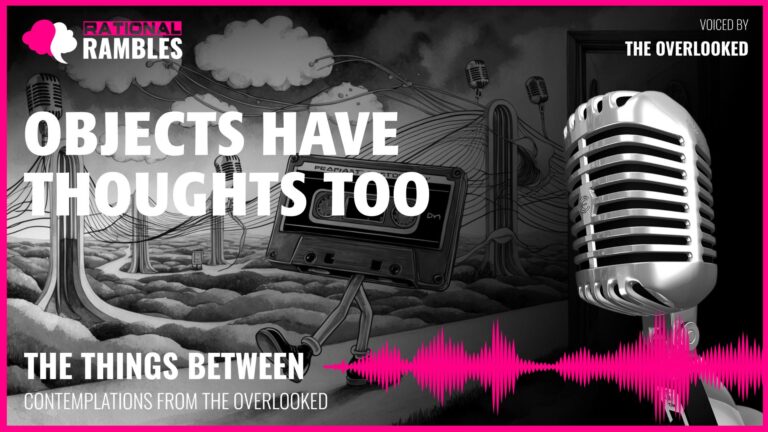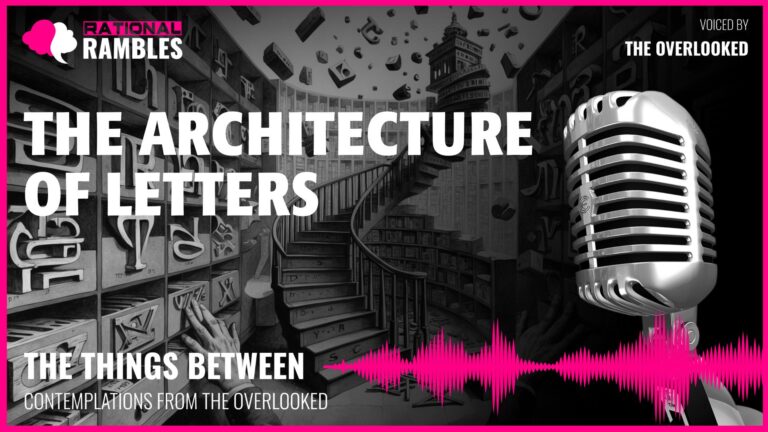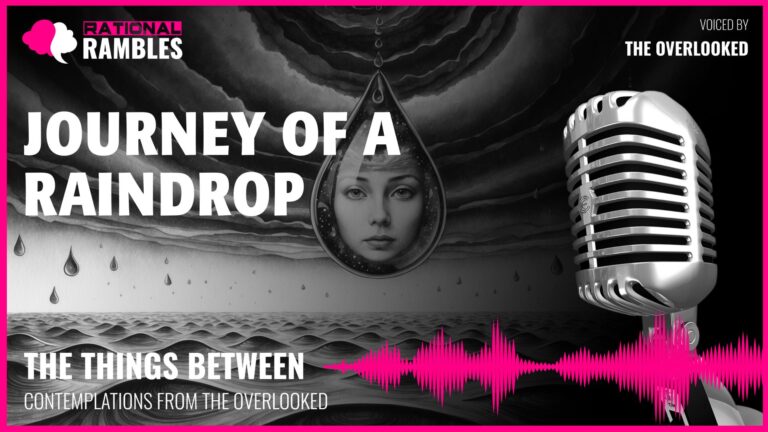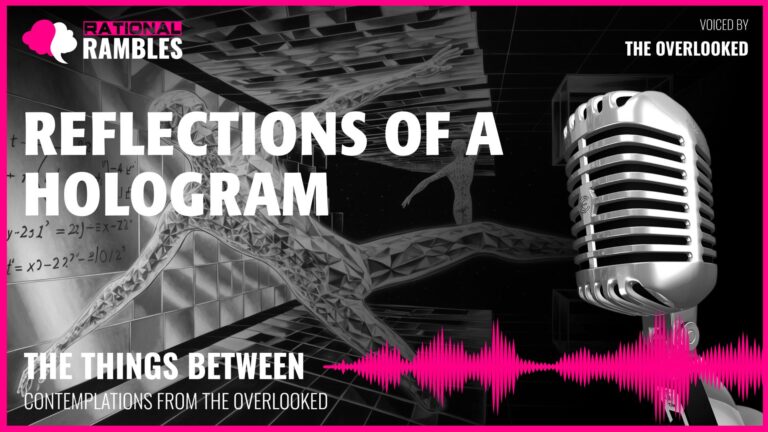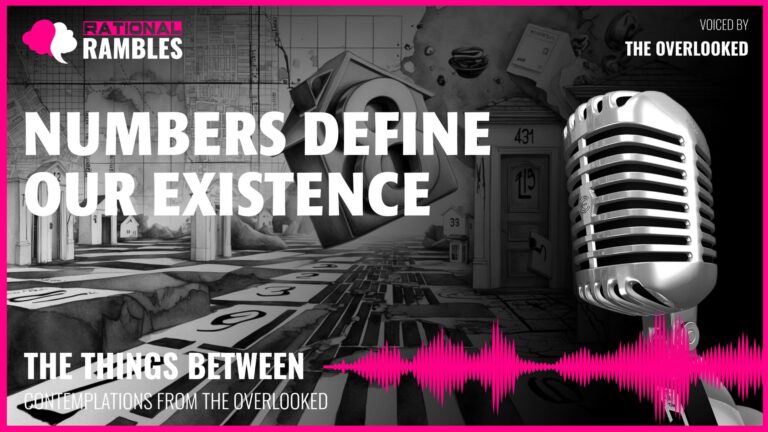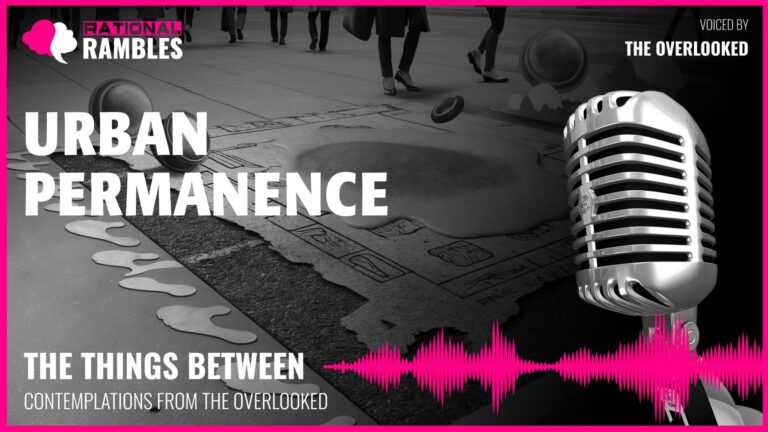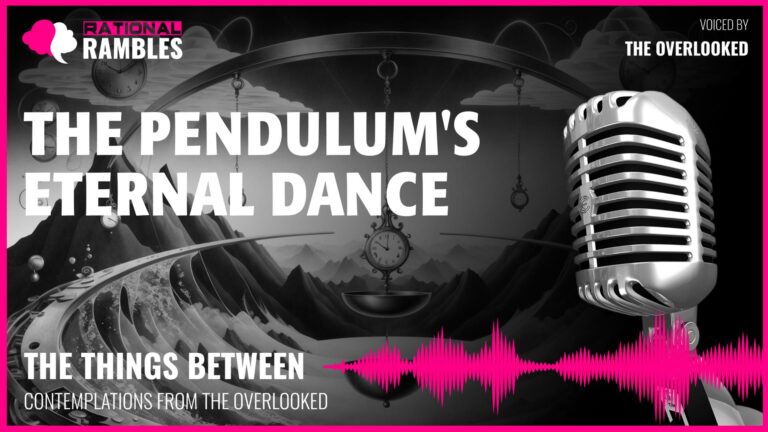Duality and Value: The Paradox of Exchange in Human Experience
Introduction
In the ceaseless flow of human commerce, we find ourselves participants in a grand, often unexamined ritual—the exchange of value. At the center of this ritual stands a humble yet profound embodiment of our collective agreement: currency. Beyond its utilitarian purpose, the phenomenon of exchange invites us to contemplate deeper philosophical questions about value, duality, purpose, and the nature of existence itself. What does it mean to possess “worth”? How do we reconcile the opposing facets of our nature? In what ways does our connection to others define us? This exploration delves into the rich philosophical terrain that emerges when we consider the metaphysics of exchange, the duality of being, and the paradoxical nature of value in human experience.
The coin—small, circular, two-sided—serves as more than mere facilitator of commerce; it functions as a powerful metaphorical lens through which we might examine fundamental aspects of the human condition. Through this lens, we can explore how meaning emerges from collective agreement, how opposing forces coexist within unified wholes, and how identity persists through constant change. The philosophical questions embedded in such seemingly mundane objects reveal surprising depths when examined closely.
The Metaphysics of Value
Value stands as one of the most curious phenomena in human experience—simultaneously objective and subjective, concrete yet abstract, personal while communal. The philosophical underpinnings of value stretch from Aristotle’s theories of exchange in his Nicomachean Ethics to contemporary questions about the nature of worth in increasingly digital economies.
The Paradox of Assigned Worth
Perhaps the most striking philosophical puzzle presented by currency is the arbitrary nature of its worth. A small metal disc holds value not primarily through its material composition but through collective agreement about what that composition represents. This represents what philosophers call “social constructionism”—the idea that certain aspects of reality exist only because communities of humans agree they exist.
The German philosopher Georg Simmel, in his work The Philosophy of Money (1900), explored this phenomenon deeply, arguing that money represents “the purest form of the tool”—an instrument whose significance lies entirely in its capacity to be exchanged for something else. This suggests a profound displacement of value from inherent properties to socially designated meaning.
This leads us to question: What is the nature of value itself? Is all value ultimately a “beautiful illusion,” as socially constructed as the worth assigned to currency? Consider how we value art, education, or even human relationships. While we experience these values as real and significant, they exist primarily through shared understanding rather than objective properties of the universe.
Value as Relationship
The exchange of currency reveals another philosophical insight: value exists not as an inherent property but as a relationship between parties. Currency has no “use value” in Marxist terms—it cannot be eaten, worn, or otherwise directly utilized to satisfy human needs. Instead, it possesses pure “exchange value,” deriving its worth entirely from what others are willing to provide in return for it.
This relational nature of value extends beyond economics. The philosopher Martin Buber’s distinction between “I-It” and “I-Thou” relationships suggests that authentic value emerges not from objectification but from relationship. Just as currency gains meaning only in the moment of transaction—the moment it passes from one hand to another—perhaps all meaningful value emerges from connection rather than isolation.
The Temporality of Value
Currency also challenges our understanding of how value relates to time. A coin minted decades ago may maintain its denominational worth despite inflation eroding its purchasing power. This persistence through temporal change raises questions about how value navigates the river of time.
The phenomenologist Edmund Husserl might interpret this as revealing the “temporal horizon” within which value operates—simultaneously reaching backward through memory and forward through anticipation. Currency’s worth depends not just on present agreement but on projected future acceptance and remembered past stability.
This temporal dimension of value invites us to consider how other forms of worth—intellectual, aesthetic, relational—similarly exist across time rather than in discrete moments. The value of education, for instance, unfolds gradually rather than materializing at the moment of graduation. The appreciation of art develops through extended engagement rather than instantaneous perception.
Duality and Integration
The physical structure of coins—two distinct sides comprising a single object—offers a compelling metaphor for examining philosophical questions of duality, integration, and the reconciliation of opposites. This structure mirrors numerous philosophical traditions that grapple with apparent contradictions in existence.
The Unity of Opposites
Heraclitus, the pre-Socratic philosopher known for his doctrine that “everything flows,” proposed that reality consists of unified opposites—a perspective strikingly embodied in the dual-sided yet unified nature of currency. “The way up and the way down are one and the same,” he famously declared, suggesting that apparent opposites actually comprise an integrated whole.
This philosophical perspective finds echo in numerous traditions. The Taoist concept of yin and yang portrays seemingly contrary forces as complementary, interconnected, and interdependent. Hegel’s dialectical method proposes that development occurs through the reconciliation of contradictions. In each case, the integration of apparent opposites generates a more complete understanding than either pole alone could provide.
When examining human nature, this perspective illuminates how seemingly contradictory aspects of our being—rationality and emotion, selfishness and altruism, individuality and collectivity—might be understood not as opposing forces but as necessary complementary aspects of an integrated whole. Like the two sides of a coin, these dualities define each other through their difference while remaining inseparable.
Identity Through Motion
A spinning coin creates a revealing phenomenon—its two distinct sides blur into an apparent unity. This transformation through motion offers a philosophical lens for examining how identity persists through change. The pre-Socratic philosopher Parmenides argued that true reality must be unchanging, while Heraclitus countered that constant flux constitutes the fundamental nature of existence. The spinning coin suggests a middle path: perhaps identity emerges precisely through the integration of change rather than despite it.
Buddhist philosophy proposes the concept of “dependent origination” (pratītyasamutpāda)—the idea that all phenomena arise in dependence upon multiple causes and conditions. Nothing possesses independent, intrinsic existence; rather, identity emerges through relationship and process. From this perspective, the self exists not as a static entity but as a dynamic pattern of relationships in constant flux.
Applied to human identity, this suggests that our sense of self emerges not despite but through our movements through time and space, our interactions with others, and our navigation of life’s contradictions. Like the spinning coin, perhaps our truest form appears when integrating our contradictions “in the spinning momentum of life.”
The Boundary Between States
The edge of a coin—that narrow boundary between its two faces—presents its own philosophical significance. When a coin stands on edge, balanced between heads and tails, it exists in a state of pure potentiality, simultaneously neither and both outcomes. Quantum physicists might recognize this as analogous to the superposition principle, where particles exist in multiple potential states until observation collapses these possibilities into a single reality.
Existentialist philosophers like Jean-Paul Sartre emphasized how human existence similarly occupies this boundary state—poised between facticity (what we unavoidably are) and transcendence (what we might become). Our consciousness, unlike that of objects, exists in the mode of not-yet-being, constantly projecting toward future possibilities.
The balanced coin reminds us that moments of undecided potential—when multiple futures remain possible—may represent a more truthful state of being than settled certainty. This perspective invites us to value the uncertain transitions in our lives as moments of particular authenticity and possibility rather than merely uncomfortable interludes between more stable states.
The Physics and Metaphysics of Circulation
The movement of currency through human society—what economists call “circulation”—reveals philosophical insights about connection, equality, temporality, and the relationship between individual and collective identity. The physical journey of exchange parallels deeper metaphysical journeys of meaning and purpose.
Circulation as Connection
When currency passes from one person to another, it creates a tangible connection between individuals who may otherwise remain strangers to each other. This physical exchange stands as the embodiment of what sociologists call “social solidarity”—the bonds that unite members of a society beyond personal relationships. Émile Durkheim distinguished between “mechanical solidarity” based on similarity and “organic solidarity” based on differentiation and interdependence. Currency circulation exemplifies the latter, connecting individuals precisely through their differences (one as buyer, one as seller).
This connecting function extends beyond economics. What philosopher Charles Taylor calls “social imaginaries”—the ways ordinary people imagine their social surroundings—depend heavily on shared practices that create connection despite difference. Currency circulation represents perhaps the most universal of these practices, cutting across cultural, linguistic, and social barriers.
The philosopher Emmanuel Levinas emphasized how our ethical responsibilities emerge through our encounters with the “Other”—those who differ from ourselves. Currency exchange creates countless such encounters daily, each containing the seed of ethical recognition: the acknowledgment of another’s equal right to participate in the social contract of value.
Equality and Inequality in Exchange
Currency presents a philosophical paradox regarding equality. In one sense, it operates democratically—serving all users equally regardless of their identity. The same coin buys the same goods whether in the hands of a laborer or an executive. Yet simultaneously, currency serves as the physical manifestation of economic inequality, as its unequal distribution determines vastly different life opportunities.
John Rawls’ “veil of ignorance” thought experiment asks us to imagine designing a society without knowing what position we would occupy within it—an exercise that typically leads toward more egalitarian arrangements. Currency invites a similar reflection: the coin itself exists without awareness of who possesses it, serving all equally while enabling systems of significant inequality.
This paradox reveals a deeper philosophical tension at the heart of modern liberal democracies: formal equality of rights existing alongside substantial inequality of conditions. Currency serves as both the solution to coordination problems in complex societies and the embodiment of the unequal outcomes such solutions often generate.
Temporality and Persistence
The extended lifespan of currency—often circulating for decades—creates a temporal dimension to exchange that challenges our usual understanding of transactions as discrete events. A coin connects not just contemporaneous individuals but potentially links generations through its extended journey. This persistence raises philosophical questions about how meaning extends through time.
The philosopher Martin Heidegger emphasized how human existence is fundamentally temporal—we understand our present in terms of our past and our anticipated future. Currency similarly exists in this extended temporal horizon, carrying with it the history of previous exchanges while anticipating future transactions.
Especially intriguing is how currency measures time not chronologically but through interactions—not in minutes but in exchanges, not in hours but in journeys from hand to hand. This suggests an alternative understanding of temporality based on meaningful connection rather than abstract progression, perhaps closer to what anthropologists call “event time” as opposed to “clock time.”
Symbolic Transcendence
Beyond its economic function, currency frequently transcends its utilitarian purpose to enter realms of symbolic meaning, ritual significance, and even metaphysical importance. These symbolic dimensions reveal how objects acquire layered significance through cultural practice and personal meaning-making.
From Commerce to Ritual
When placed in collection plates, tossed into fountains, or positioned under pillows, currency transitions from commerce to symbol—from economic to ritual significance. Anthropologist Victor Turner might identify these as moments of “liminality,” where ordinary objects temporarily occupy extraordinary symbolic status.
This transformation reveals how even the most mundane objects can acquire sacred or symbolic significance through collective practice. Philosopher Susanne Langer distinguished between “discursive” symbols (like language) that communicate through convention and “presentational” symbols that convey meaning through their sensory qualities. Currency functions simultaneously in both dimensions—conveying specific value through convention while embodying broader concepts of worth, exchange, and possibility through its physical presence.
The transformation of currency into ritual object demonstrates what philosopher Ernst Cassirer identified as humanity’s nature as the “symbolic animal”—beings who constantly create and manipulate systems of meaning beyond immediate physical reality.
Symbols of Fortune and Fate
Currency’s use in decisions—the classic coin flip to determine outcomes—connects it to philosophical questions about chance, fate, and the boundaries of human agency. The moment of the flip creates what philosopher William James might call a “forced option”—a decision that cannot be avoided once initiated and that requires committing to one path while abandoning others.
The suspended moment when the coin spins through air represents what physicists call a “chaotic system”—one whose outcome depends on minute initial conditions impossible to fully control or predict. This physical indeterminacy serves as apt metaphor for the philosophical concept of contingency—the domain of what is neither necessary nor impossible, the realm of what might or might not be.
As an “instrument of destiny,” the flipped coin embodies the paradoxical human relationship with fate—simultaneously seeking to control outcomes while surrendering to forces beyond control. This paradox echoes throughout existentialist philosophy, particularly in Albert Camus’ concept of the “absurd”—the tension between our desire for meaning and the universe’s failure to provide it.
Talismans and Transcendence
When carried as lucky charms, rubbed for comfort, or preserved as keepsakes, currency transcends economic function to become personal talisman. This transformation reveals how objects acquire biography—what anthropologist Igor Kopytoff called the “cultural biography of things”—as they move through different contexts and relationships.
These talismanic uses connect to what philosopher Charles Sanders Peirce called the “indexical” function of signs—where meaning emerges not through convention but through causal or existential connection. The lucky coin gains significance not arbitrarily but through its association with past experiences or hoped-for futures.
Perhaps most philosophically striking is currency’s use in funerary practices across cultures—placed on eyes or in mouths of the deceased, included in burial goods, or offered to mythical figures like Charon the ferryman. In these contexts, currency becomes metaphysical passport, suggesting that systems of exchange might extend beyond the physical world into spiritual domains.
Identity Through Change
Currency presents a compelling case study in how identity persists through physical change and contextual transformation. The philosophical paradox of remaining “the same” while undergoing alteration finds physical manifestation in the journey of exchange.
The Ship of Theseus Problem
The ancient philosophical paradox known as the Ship of Theseus asks whether an object that has had all its components replaced remains fundamentally the same object. Currency presents a variant of this problem through gradual wear—as a coin’s physical appearance changes through handling while its denominational identity remains constant.
This raises the question: does the essence of an object reside in its physical composition or in its function and recognition? The philosopher John Locke proposed that identity through time depends on continuity rather than material sameness—a perspective that seems particularly applicable to currency, whose identity depends more on social recognition than physical constancy.
When considering human identity, this distinction becomes even more significant. Like currency that maintains its value despite physical change, perhaps personal identity persists not through unchanging physical or psychological properties but through narrative continuity and social recognition.
Authenticity and Alteration
The question of whether a coin appears more authentic when newly minted or when worn by use parallels philosophical debates about authenticity in human life. Existentialist philosophers like Heidegger and Sartre emphasized authenticity as alignment with one’s true nature rather than conformity to external expectations.
Yet this raises the question: does authenticity reside in original condition or in the honest manifestation of experience? A weathered coin displays its history truthfully, while a polished one conceals the evidence of its journey. This tension between pristine origin and experienced particularity echoes throughout philosophical discussions of authenticity.
Contemporary philosopher Charles Taylor suggests that authenticity emerges not through isolation from external influence but through dialogical engagement with meaningful relationships and traditions. From this perspective, perhaps both the newly minted coin and the weathered one represent authentic expressions of different aspects of currency’s nature—one embodying its ideal form, the other its lived experience.
Defacement and Transformation
When currency is intentionally altered—pressed flat on railroad tracks or transformed into jewelry—it undergoes a fundamental identity shift. These transformations raise philosophical questions about the boundaries of identity and the relationship between intended purpose and actual use.
Philosopher Martin Heidegger distinguished between an object’s “readiness-to-hand” (its practical utility) and its “presence-at-hand” (its existence as an object of contemplation). Altered currency crosses this boundary, shifting from practical tool to aesthetic or commemorative object.
This transformation challenges utilitarian perspectives by demonstrating how objects can acquire new meaning and value precisely by abandoning their intended function. Just as humans sometimes find their deepest fulfillment in activities beyond their “practical” social roles, objects too may discover unexpected significance beyond their designed purpose.
Existence and Obsolescence
As digital forms of exchange increasingly replace physical currency, philosophical questions emerge about materiality, progress, and the relationship between tangible and virtual existence. These questions extend beyond economics to challenge our understanding of reality itself in an increasingly digital age.
Materiality and Meaning
Physical currency’s potential obsolescence raises questions about whether materiality matters to meaning. Does the tangible nature of exchange—the physical passing of value from hand to hand—hold significance beyond convenience? Phenomenologists would likely answer affirmatively, seeing in physical exchange an embodied experience that digital transactions cannot fully replicate.
Philosopher Hubert Dreyfus, critiquing virtual experience, emphasized how embodiment fundamentally shapes understanding. Physical currency engages multiple senses—we see, feel, hear, and sometimes even smell the objects of exchange. This multi-sensory engagement creates what phenomenologists call a “thicker” experience than digital alternatives, potentially fostering different relationships to value.
Even as physical currency becomes less common, its tangibility continues to anchor our conceptual understanding of exchange. We still “pay attention,” “invest time,” and “spend energy”—applying physical metaphors to increasingly virtual activities. This suggests what philosopher Mark Johnson calls the “embodied mind”—our conceptual systems remain grounded in physical experience even as that experience becomes less common.
Progress and Loss
The transition from physical to digital exchange represents what philosopher Walter Benjamin might call a trade-off between efficiency and “aura”—the sense of uniqueness and authenticity that accompanies physical objects. Each technological advance brings both gains and losses, raising the philosophical question of whether “progress” can be evaluated objectively or only through necessarily subjective value judgments.
Heidegger warned against seeing technology as merely instrumental, arguing instead that it fundamentally changes our relationship with the world. Digital currency certainly increases convenience and security in many contexts, but it may simultaneously alter our experience of exchange in ways we cannot fully anticipate or evaluate.
This connects to broader philosophical questions about technological determinism—the extent to which technological developments shape society rather than merely serving existing social needs. Does the digitization of exchange represent an inevitable progression, or does it reflect particular values and priorities that might have developed differently under other cultural conditions?
Persistence Through Transformation
Even as physical currency faces potential obsolescence, its conceptual legacy continues. Digital currencies retain many features of their physical predecessors—discrete units, transferability, and symbolic representation of value. This persistence raises philosophical questions about how ideas transcend their original embodiments.
Philosopher Daniel Dennett’s concept of “substrate neutrality” suggests that certain patterns or systems can maintain their essential functions across different physical implementations. Currency seems to exemplify this principle, with its core functions transferable from metal to paper to digital encodings.
This transferability suggests that perhaps what matters about currency is not its physical form but the social relationships it enables and represents. As philosopher John Searle emphasizes, money is fundamentally an institutional fact rather than a brute physical reality—it exists through collective agreement rather than material properties. From this perspective, the physical embodiment of currency might change dramatically while its essential social function remains.
The Ethics of Exchange
Currency’s circulation raises profound ethical questions about justice, responsibility, and the moral dimensions of economic systems. The apparent neutrality of exchange mechanisms often obscures deeper ethical implications embedded within systems of value and distribution.
Justice in Distribution
The unequal distribution of currency represents one of the most visible manifestations of broader questions about distributive justice. Philosophical approaches to this question range widely, from John Rawls’ egalitarian “difference principle” (inequalities are justified only if they benefit the least advantaged) to Robert Nozick’s libertarian “entitlement theory” (distribution is just if it results from just acquisition and transfer, regardless of resulting inequality).
Currency’s physical movement through society makes abstract questions of distribution concretely visible. The same coin might pass through hands of vastly different economic circumstances, participating in both luxury purchases and survival necessities. This physical connection between disparate economic realities creates what philosopher Iris Marion Young might call “structural connection”—a material link between individuals otherwise separated by social distance.
This connection raises questions about responsibility: Does participating in economic exchange create ethical obligations to consider the broader system within which that exchange occurs? Does the physical movement of currency create a kind of moral connection between otherwise disconnected individuals?
The Ethics of Instrumentality
Currency exemplifies pure instrumentality—valued not for itself but for what it can obtain. This raises connections to Kant’s categorical imperative, particularly his formulation that we should treat humanity never merely as means but always also as ends in themselves. Unlike humans, currency exists properly as pure means, raising the philosophical question of whether this instrumentality influences how we perceive value more broadly.
Philosophers from the Frankfurt School, particularly Theodor Adorno and Max Horkheimer, warned against the spread of instrumental rationality beyond appropriate domains. When everything becomes evaluated in terms of exchange value rather than inherent worth, they argued, something essential to human flourishing is lost.
The philosopher Michael Sandel has argued that market values have extended into domains previously governed by other norms, potentially “crowding out” non-market values and changing the character of the goods themselves. This suggests that currency’s instrumental logic may influence our perception of value even in non-economic domains—education, relationships, or civic participation.
Recognition and Invisibility
Currency raises ethical questions about recognition—who and what we notice in our economic transactions. A coin might be “searched for desperately” or “tossed aside thoughtlessly” depending on circumstance, suggesting how context shapes attention and concern.
Philosopher Axel Honneth identifies recognition as fundamental to justice, arguing that being properly seen and acknowledged constitutes a basic human need. Economic transactions often render certain participants invisible—we may never see the producers of goods we purchase or consider the future holders of currency we spend.
This invisibility raises ethical questions about what philosopher Judith Butler calls “grievability”—whose lives we consider worthy of attention and concern. The global circulation of currency connects individuals who may never directly encounter one another, creating what philosopher Iris Marion Young calls “structural responsibility” beyond direct interaction. How might economic systems be redesigned to make these connections more visible and the resulting ethical obligations more apparent?
Conclusion: The Philosophy of Ordinary Things
Our exploration of exchange, value, and duality through the metaphor of currency reveals how philosophical depth resides in the most ordinary aspects of human experience. The small metal disc, passed countless times between countless hands, carries within its humble form profound questions about existence, identity, connection, and meaning.
Perhaps this suggests a broader philosophical insight: that wisdom resides not primarily in rarefied abstraction but in attentive engagement with the everyday. As philosopher Maurice Merleau-Ponty observed, “True philosophy consists in relearning to look at the world.” The mundane objects and interactions that compose most of our lives—the exchanged coin, the passing glance, the casual conversation—contain within them the essential questions of human existence, if only we learn to perceive them.
The paradoxes embodied in currency—identity through change, value through agreement, connection through difference—mirror the fundamental paradoxes of human existence itself. We too exist as both physical and symbolic beings, as individuals and participants in collective meaning, as entities that persist through constant change.
Currency’s journey—from hand to hand, culture to culture, generation to generation—reminds us that meaning emerges not in isolation but through circulation, not in stasis but in movement, not in separation but in exchange. In the simple act of passing value from one person to another, we participate in one of humanity’s oldest and most profound acts of collective meaning-making—creating worth together that none of us could create alone.
As we consider the philosophical dimensions of exchange, we might find ourselves looking differently at the coins in our pockets or the transactions that structure our days. These are not merely economic tools but embodiments of our social nature, physical manifestations of our collective agreements, tangible connections to countless others who have held and will hold these same objects. In recognizing the philosophical depth of such ordinary things, we may discover anew the extraordinary nature of ordinary human existence.


